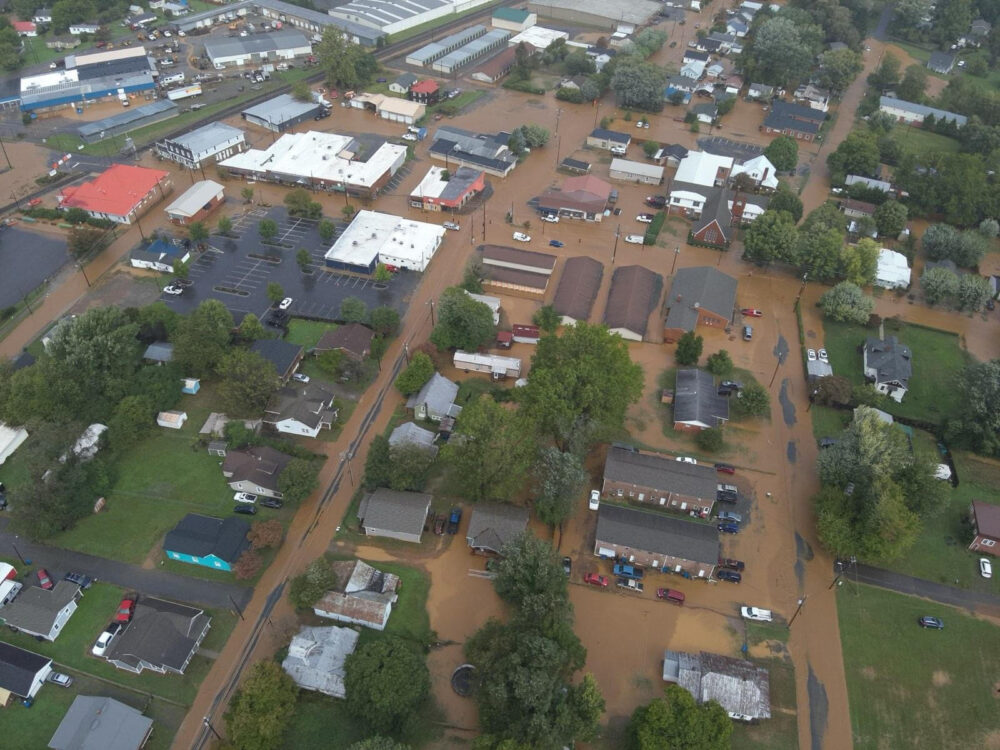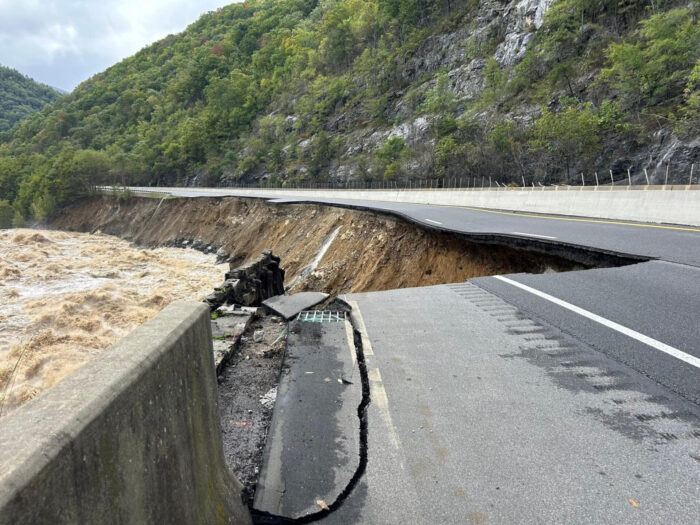
Special to IFN
RALEIGH — Rescue and recovery operations continue to take place in western North Carolina as resources and aid are brought into the region. While North Carolina Emergency Management officials are working around the clock to support local efforts and coordinate emergency supply drop-offs, communication problems persist in the region and North Carolinians are urged to not travel to the area.
“The catastrophic devastation to western North Carolina is like nothing we have ever seen,” said Gov. Roy Cooper. “Emergency responders are working around the clock coordinating rescues and getting resources to help people with their immediate needs as they work to save lives.”
As of 8 p.m. Saturday, 10 North Carolinians have lost their lives due to Helene. Swiftwater and helicopter rescue crews have rescued more than 200 people since Thursday.
Cooper has urged communications providers, including cell phone carriers and utilities, to restore service as quickly as possible. North Carolina’s emergency management and transportation workers are pushing to open roads and rush supplies as quickly as possible. Utilities and communications are returning in some areas, but it may be days before service is fully restored.
Meanwhile, North Carolina residents trying to connect with family members may call NC 211 (or 1-888-892-1162 if calling from outside the state) to report missing loved ones. People in the impacted areas can indicate they are safe by checking in on Facebook crisis response or reporting themselves safe through Red Cross Reunification by calling 1-800- ED-CROSS (1-800-733-2767). Only use 911 for life-threatening emergencies so the lines remain open for critical situations.
Emergency response efforts & resources
Emergency management crews are working with local officials in western North Carolina communities to assess damage and identify needs and find solutions. The State Emergency Operations Center is working around the clock to support locals and deliver supplies and aid.
Supplying drinkable water is a top priority for emergency crews. Seven water plants in Avery, Burke, Haywood, Jackson, Rutherford, Watauga and Yancey counties are closed, impacting nearly 70,000 households. A total of 17 water plants have reported having no power, and an additional 23 are operating on backup power. There are 50 boil water advisories in effect across western communities. Information on how to safely boil water is available on the CDC website: How to Make Water Safe in an Emergency.
The governor has deployed the NC National Guard with 410 troops and 146 vehicles including high-water vehicles to help with rescues, transport patients to medical care and deliver personnel and equipment to help with storm response.
Approximately 630,000 customers in North Carolina remained without power Saturday afternoon with the bulk of them within Buncombe County. Fifteen shelters are currently open and housing approximately 500 people. (See ReadyNC.gov for latest)

On Saturday, Interstate 26 south of Asheville was opened but remains the only major thoroughfare into the region due to damage to Interstate 40 and other routes. State transportation officials continue to urge people to avoid travel anywhere in western North Carolina as about 390 roads and dozens of main highways remain closed Saturday due to flooding, downed trees, landslides or storm damage. The N.C. Department of Transportation is prioritizing work to reopen interstates, U.S. and state highways before getting to secondary routes, but the department also is working with utility companies and local emergency officials to find alternative routes and to assist in maintaining access to shelters and restoring power.
State officials report that while many of the rivers and tributaries are still far above flood stage, waters are receding and most are expected to be back to near-normal levels by late Monday.
LEARN MORE
For the latest updates and information, check these resources:
♦ ReadyNC.gov for power outage and shelter information.
♦ DriveNC.gov for road closings and travel conditions.
♦ NCDPS.gov/Helene for the latest information on storm response/recovery.
♦ https://fiman.nc.gov/#/ Flood Inundation Mapping and Alert Network for real-time river flood gauge



